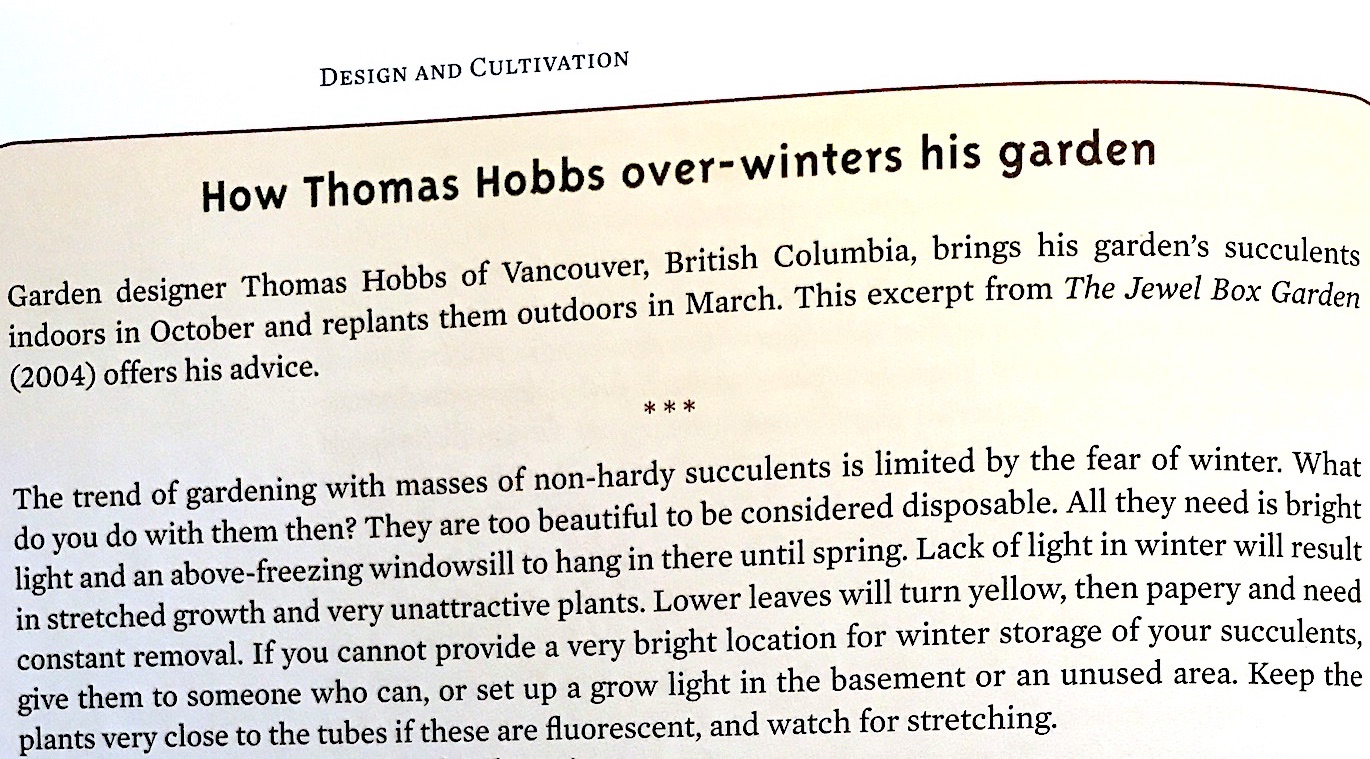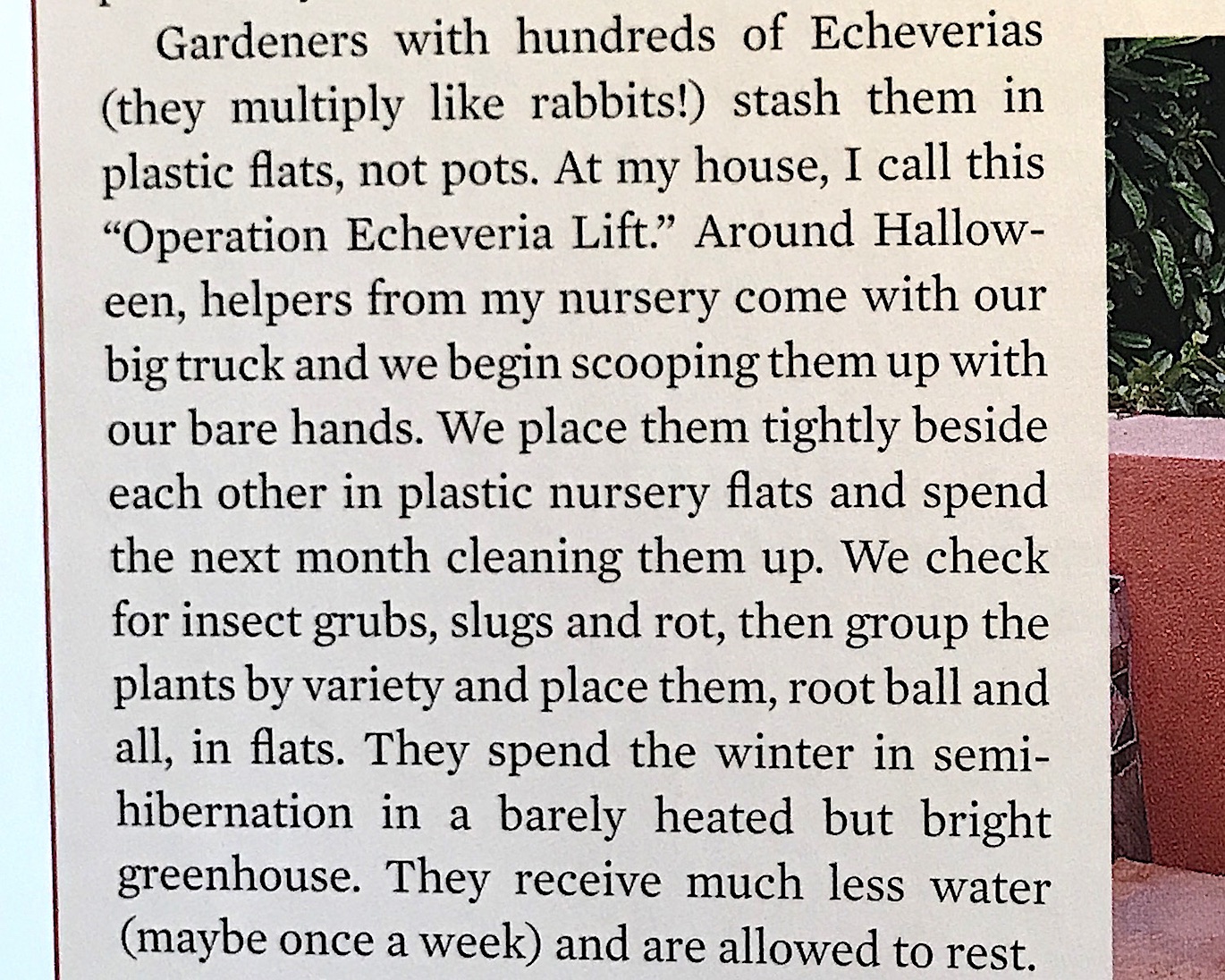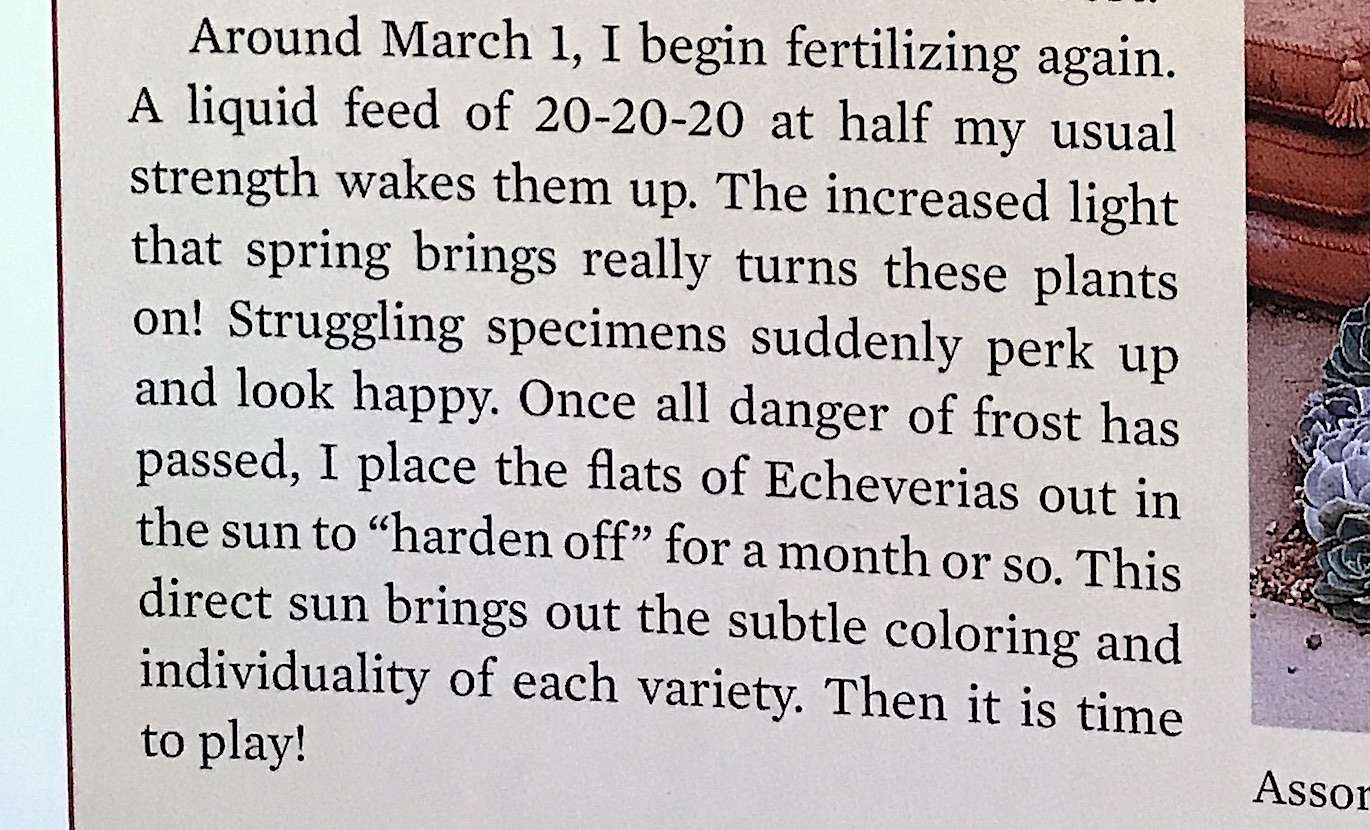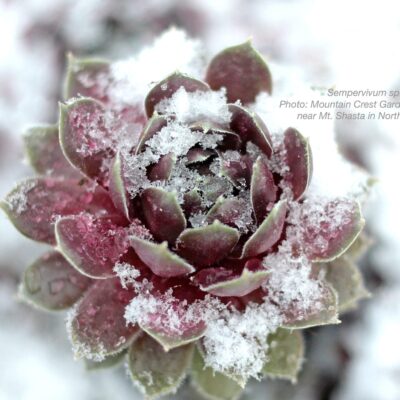Where you live makes a big difference when it comes to the well-being of your succulents in winter. Most varieties go dormant in winter and are frost-tender, meaning they can’t handle temps below 32 degrees F.
Winter Conditions That Damage Succulents
These common winter conditions can lead to damage or death for dormant (not actively growing) succulents:
- soggy soil (causes roots to rot)
- excess rainfall (engorges cells)
- frost (causes cell walls to burst)
Some succulents do have a built-in antifreeze. Succulents from arid northern climates---including hundreds of Sedum, Sempervivum, Delosperma, Prometheum and Opuntia varieties---survive frost, snow, and subzero temps with minimal effort. There are exceptions, but succulents from Madagascar, the Canary Islands and South Africa (kalanchoes, aeoniums, aloes and crassulas, to name a few) are generally frost-tender.
No succulents want a lot of water when dormant, nor high humidity at any time of the year. All prefer well-draining soil, bright but not intense light, and good air circulation.
Dealing With Occasional Frost
If you live, as I do, where frost is occasional and lasts only a few hours (Zone 9b), plan to cover vulnerable, in-ground succulents with frost cloth or bed sheets when there’s a frost advisory for your area. In my YouTube video, Frost Protection for Succulents, I show how I do this in my own garden. In the foothills NE of San Diego at 1,500 feet, it’s subject to cold air that settles in inland valleys. My neighbors higher-up generally get no frost at all.
Also, Pellon nonwoven fabric and Agribon's floating row cover will work. "Floating row cover" is spun nylon, like fusible interfacing without the fusible part. It can be used for frost protection, insect barrier (cabbage moths, etc.) and sunscreen. You can water right through it, and vapor moves through it. It will protect about 2 to 4 degrees below freezing. For extra warmth, use C-9 Christmas light strings.
Go to: recommended products for cold-protection
Overwintering: For Temps Below 40F
If you live in Zones 8 or lower, grow tender succulents as annuals or in containers that you overwinter indoors. When temperatures drop into the 30s, it's time to move potted succulents indoors.
Before bringing them inside, clean the pots' exteriors and check for pests.
Keep them above 32 degrees F but not higher than 60 (cold is necessary for flowering later on). Keep a fan running to enhance air circulation, and a dehumidifier if the air is moist.
Basically you need to outfit a basement, sun room, spare room or alcove with tables and shelves that can withstand moisture, plus lights and a fan that run on timers.
Top growth slows to a standstill, usually in winter. Fortunately, dormant succulents need very little water. Dribble a little at the base of each plant every three weeks or so, enough to hydrate the roots but not so much it puddles on the floor. Don't fertilize succulents when they're dormant.
Examples of Winter Set-Ups
Members of my Facebook community graciously shared their winter set-ups:
Pat Enderly of Virginia Beach, VA: Midwinter lows average 32 F.
Pat brings her plants indoors and tucks them into shelving units she purchased online. Each shelf has a waterproof tray, and each unit is lit by two T5 bulbs.
“They do a wonderful job of keeping my succulents from etiolating (stretching),” Pat says, adding that the lights, on timers, stay on from 7 am to 7 pm daily.
Pat moves her succulents indoors in Sept. and Oct. and takes them outside in April.
Candy Suter, Roseville, CA (near Sacramento)
Midwinter nights may drop into the 20s F but seldom go lower than 25 F.
Candy moves her succulents into a small walk-in greenhouse (center) or a gazebo (right), which she covers with 5mm plastic to hold in warmth. She anchors the plastic along the bottom, secures the seams with duct tape, and adds a small heater with a fan on the coldest nights.
Resources
Books
- Designing with Succulents (2nd ed.) See the section on Cold-Climate Succulent Gardens.
- Cacti & Succulents for Cold Climates, by Leo Chance (Timber Press)
- Hardy Succulents: Tough Plants for Every Climate, by Gwen Kelaidis, Photos by Saxon Holt (Storey Publishing)
Also on this site
- How to Keep Succulents Happy Indoors Includes a Gallery of Indoor and Shade Succulents
- 50 Succulents that Don't Freeze in Winter What you need to know plus a Photo Gallery of Hardy Succulents
- Showy Succulents for Snowy Climates (Debra's Wall Street Journal Article)
- Cold-Weather Care for Outdoor Succulents, By Region Where you live can make a big difference
- Frost and Succulents: What You Need to Know Can succulents recover from frost damage? Find out.
Videos
- How to Help Succulents Survive Rain, Hail, Frost (4:53)
- How to Protect Your Succulents from Frost (3:30)
- Growing Succulents in Northerly Climates: Sempervivums (9:03)
- Growing Succulents in Northerly Climates: Sedums and More (7:08)
Book excerpt
How Vancouver, BC nurseryman Thomas Hobbs overwinters his succulents, from the first edition of my book, Designing with Succulents (Timber Press, 2007):



50 Cold-Hardy Succulents for Northern Climates
The popular and readily available varieties shown here can handle northern winters, snow, rainstorms (if given excellent drainage) and summer dry spells. There are two main genera: Sedum and Sempervivum. Lesser known are Rosularia, Delosperma, and Orostachys. Notably, certain species of Agave and cacti don’t freeze in all but the coldest climates.

